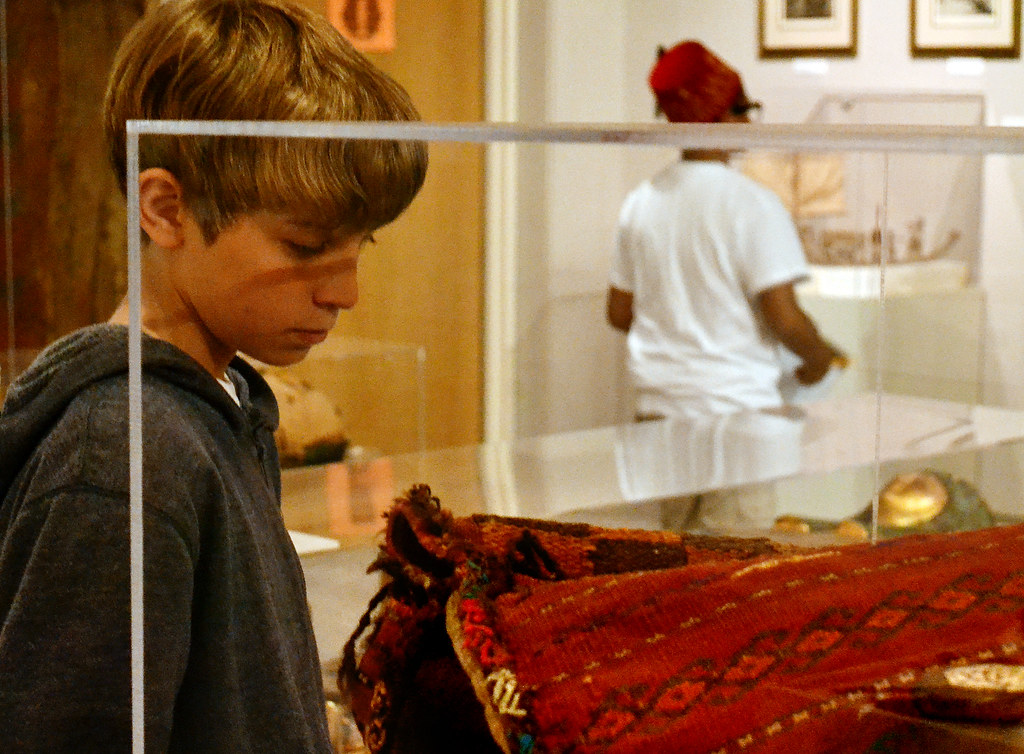
The average student’s day doesn’t usually include developing museum exhibits, being responsible for ancient artifacts or hanging out with the only real mummy in the Bay Area. But for students like Liz Olveda, that’s a pretty normal day in the University Museum.
“I acted as the registrar for the exhibition, which means that I kept track of all the objects that were taken out of storage and put on display,” said Olveda, a 23-year-old graduate student in museum studies. “I also worked with a small team of my classmates (to) develop the portion of the exhibit focused on ancient Egypt.”
Tucked away on the fifth floor of the Humanities Building is the University Museum. Students from various classes put together the museum exhibits, oversee volunteers and field trips, catalog objects and take on other tasks that maintain the museum.
The whole operation is run completely by students, under the direction of the museum studies faculty.
The current exhibit in the museum is called “Fearless Women Voyagers: Women Who Challenged the Middle East, 1870-1940.” The exhibit, put together by the museum curatorship class in the fall, was created with the help of Linda Ellis, curator of the museum.
“It was interesting chatting with some of my classmates in the program about their involvement with putting on the exhibit,” said Karlie Drutz, a 22-year-old museum studies student. “They worked really hard under the guidance of the Curator of the University Museum, Professor Linda Ellis, to curate and install the exhibit.”
The ‘Fearless Women Voyagers’ exhibit is focused on female travelers and their accomplishments, as well as their challenges. A big part of the challenges these women faced stemmed from how unusual it was during that time period for foreign women to travel in North Africa and the Middle East. It tells the stories of different women, and features objects from the cultures and places visited by those women.
Another class intimately involved with the inner workings of the museum is the museum volunteer management and membership class. Taught by Christine Fogarty, a lecturer and faculty member of the museum studies department, the class focuses on the volunteers and the essential role they play in the museum’s upkeep.
“The students in that class each take part spending time in the museum, and working with our amazing volunteers who take the time out of their schedule to keep our University Museum open to the public,” 26-year-old museum studies graduate student Brianne Newell said.
The volunteer management class works with a wide variety of volunteers from the University and the public. They also help prepare for field trips done by grade schools in the Bay Area. Many schools in the area come for field trips to the museum when they’re learning about Egyptian history, since the University Museum has a set of Egyptian antiques that includes the only mummy in the Bay Area, Nes-Per-N-Nub.
“Everyone agrees (on their favorite part): the mummy, Nes-Per-N-Nub,” Fogarty said. “It’s the only intact, life-size mummy in the Bay Area, and its triple-nesting coffin is the only one in the United States.”
Out of all the places to visit on campus, only the University Museum displays a mummy.
Along with the Sutro Egyptian Collection, the museum’s permanent collection also features the Lindgren Coin Collection, the Rietz Collection of Ancient Food Technology, the Bourne Collection of Roman pottery and three Amarna period sculptures. The permanent collection includes items such as Italian ceramics, “everyday” objects from ancient Egypt and photographs of archeological digs, while the current exhibit includes examples of clothing the female travelers would have worn. The story of Amelia Ann Blanford Edwards, a noted 20th century Egyptologist, is one of those complimented in the exhibit, and has Egyptian artifacts to accompany it.
While many students enjoy the museum and its historical artifacts, many aren’t aware of the museum’s presence.
“I had no idea such a thing existed,” said Beighley Repp, a 19-year-old political science major.
Though not well-known, the University Museum provides students a great opportunity to get involved in their field of work, getting hands-on experience that can’t be replicated in the classroom. But it’s more than the artifacts and the volunteer work that resonates with the students.
“For me, the best part of the museum isn’t in the collections, but in the look on the faces of the visitors who walk in for the first time and discover that there is this amazing museum on campus,” Newell said.
The University Museum, located in Humanities 510, is open through May 2 on Tuesdays and Thursdays from 12 p.m. to 4 p.m. and til 7 p.m. on the first Thursday of the month. ‘Fearless Women Voyagers: Women Who Challenged the Middle East, 1870-1940’ is now also open on Fridays from 10 a.m. to 1 p.m. Admission to the University Museum is always free.




